60 years ago today, Syncom 3, the first geostationary communication satellite, was launched. Two months later, it would enable live coverage of the 1964 Summer Olympics in Tokyo. It was the third satellite in the Syncom project, which also included the world’s first geosynchronous satellite, Syncom 2. All three are still in orbit. READ more from on this day… (1964)
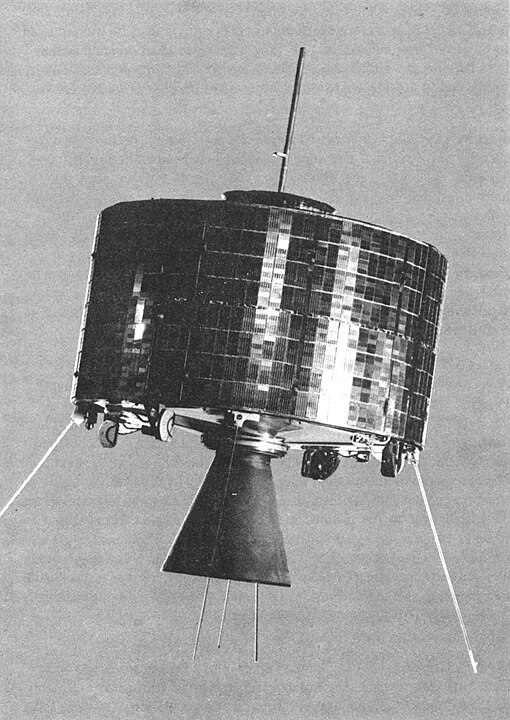
MORE Good News on this Day:
- The Liberation of Paris commenced, with French resistance fighters uprising against German occupiers as rumors of the Allies’ advance energized the capital (1944)
- The Beatles launched their first North American tour, performing first in San Francisco—after having played concerts earlier that year in Washington D.C. and New York—all with the stipulation that the band would refuse all venues that excluded African Americans (1964)
- Polish President Jaruzelski nominated a Solidarity union activist to be the first non-communist Prime Minister in 42 years (1989)
- The last of the United States brigade combat teams leave Iraq, crossing the border to Kuwait (2010)
8 years ago today, Tajikistani athlete Dilshod Nazarov won himself and his country its first-ever gold medal in the history of the Olympics in Rio De Janeiro when he threw 78.68m to win the men’s hammer throw. Nazarov was their best chance when he stepped up in Rio, having already won Tajikistan’s first-ever gold medal in the Asian Games back in 2006.
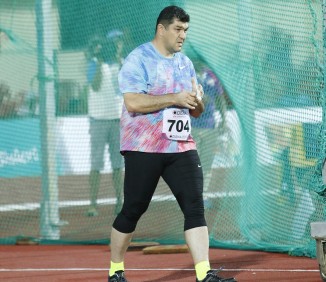
Olympic-style events are not Tajikistan’s forte, with the most popular sport being buzkashi, a game played on horseback, like polo. Buzkashi may be played as an individual sport and as a team sport. The aim of the game is to grab a 50 kg dead goat, ride clear of the other players, get back to the starting point, and drop it in a designated circle.
Four Tajikistani athletes have won Olympic medals for their country since independence. They are: wrestler Yusup Abdusalomov (silver in Beijing 2008), judoka Rasul Boqiev (bronze in Beijing 2008), boxer Mavzuna Chorieva (bronze in London 2012), and hammer thrower Dilshod Nazarov (gold in Rio de Janeiro 2016).
93 years ago today, a baby in Texas was born so small that he was not expected to survive the night, but William Shoemaker’s size proved an asset in ‘the Sport of Kings’. As a jockey he became the giant of thoroughbred racing, winning 11 Triple Crown races.
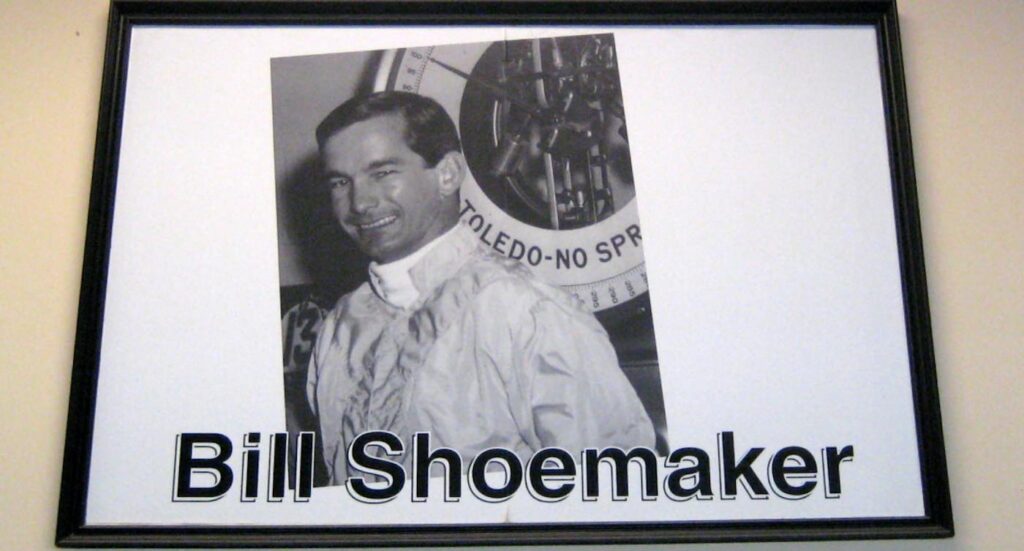
At 39, ‘Willie’ Shoemaker broke the record for most professional wins by a horse jockey, with 6,033 victories (a record he would hold for three decades).
He won 8,833 races during a career spanning 41 years until his last race in 1990. One year later, a car accident left him paralyzed and he remained in a wheelchair for the rest of his life, though he returned to the track and trained racehorses until his retirement in 1997. He died in 2003 at age 72. Watch his miraculous win at the 1986 Kentucky Derby, when Shoemaker—at age 54—became the oldest jockey ever to win the race, surging from dead last upon a horse with daunting odds of 18-1 named Ferdinand… (1931)
And, on this day 62 years ago, American pro golfer Homero Blancas shot a record-setting round of 55 in a college tournament that still stands as the lowest round in the history of competitive golf. 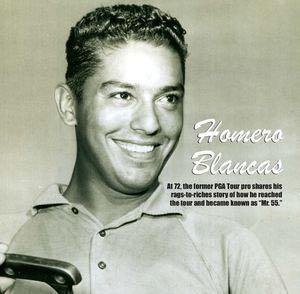
The Mexican-American born in Texas, played for the University of Houston when, at age 24, his 13 birdies and one eagle on the par-70 course in Longview, Texas made history. Blancas, now 78, stayed with the sport and won tournaments on the PGA Tour and Champions circuit. (1962)
185 years ago today, the world’s first photography process, invented by Frenchman Louis Daguerre, was presented as a gift to the world—patent-free, with detailed instructions on how to do it.
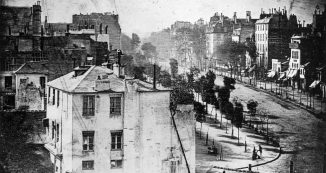
The images on copper sheets produced extremely fine detail, and were enthusiastically praised as nearly miraculous—and over the next 21 years, until photographers switched to paper, millions of the metal photographs had been produced.
The ‘daguerreotype’ process required exposures lasting ten minutes, but the inventor soon made the crucial discovery that an invisibly faint ‘latent’ image created by a much shorter exposure could be chemically ‘developed’ into a visible image. Upon seeing the final image unconcealed, Daguerre said: “I have seized the light – I have arrested its flight!”
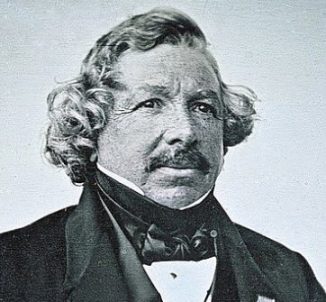
For the daguerreotype process, a thin silver-plated copper sheet was exposed to the vapor given off by iodine crystals, producing a coating of light-sensitive silver iodide on the surface. The plate was then exposed in the camera. Daguerreotypes were usually portraits; the rarer landscape views and other unusual subjects are now much sought-after by collectors and sell for much higher prices.
Though he is most famous for his contributions to photography, Daguerre, who apprenticed in architecture and theatre design and art, was also an accomplished painter and a developer of the diorama theatre. (1839)
On this day 34 years ago, Leonard Bernstein conducted his final concert, performing Beethoven’s Seventh Symphony at Tanglewood.
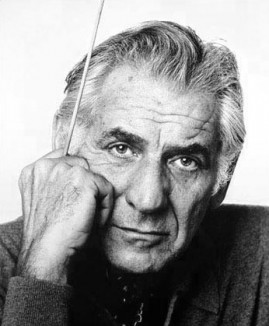
Within months he died of a heart attack at 72 years old. During his funeral procession through Manhattan, construction workers removed their hats to honor the prodigious musician and composer of West Side Story, yelling, “Goodbye, Lenny.”
Bernstein is buried in Brooklyn, NY, with a copy of Mahler’s Fifth lying across his heart. His Final Concert was recorded and later released on CD. (1990)
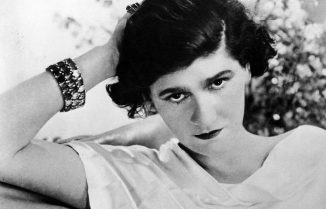
And on this day in 1883, the rebel Coco Chanel, a fashion designer who rose from poverty in France to liberate women from corsets with her casual clothing and iconic “little black dress”, was born. Her sporty chic became the feminine standard of style and, as a businesswoman, Chanel extended her influence beyond clothing, to become the first designer to put their name on a fragrance, Chanel No. 5. WATCH a mini-bio of one of the most influential people of the 20th century…
SHARE the Milestones, Memories, and Music…




















[…] By Good News Network […]